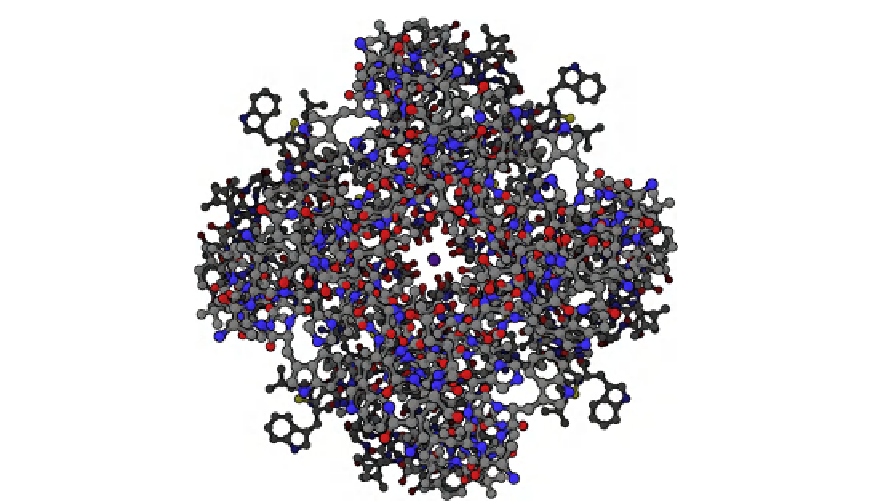Biology Reference
In-Depth Information
FIGURE 14.7
Three-dimensional structure of the potassium channel
[12]
. The channel itself is the clear opening
in the center of the structure and a single K
þ
is shown in the center of the channel.
the rising phase of action potentials. Therefore, agents that block Na
þ
channels also block
nerve conduction and so are deadly neurotoxins. There are two basic types of Na
þ
channels,
voltage-gated and ligand-gated. The opening of a Na
þ
channel has a selectivity filter that
attracts Na
þ
. From there the Na
þ
s flow into a constricted part of the channel that is
~3
5
˚
wide. This is just large enough to allow the passage of a single Na
þ
with one attached
water. Since the larger K
þ
cannot squeeze through, the channel is selective for Na
þ
. Of partic-
ular interest are two extremely potent biological toxins, tetrodotoxin (TTX) and saxitoxin
(STX)
[14]
, that have killed and injured many humans. Both toxins shutdown Na
þ
channels
by binding from the extra-cellular side.
e
Tetrodotoxin
Tetrodotoxin (TTX) is encountered primarily in puffer fish but also in porcupine fish,
ocean sunfish, and triggerfish. TTX is a potent neurotoxin (
Figure 14.9
) that blocks Na
þ
chan-
nels while having no effect on K
þ
channels. Puffer fish are the second most poisonous verte-
brate in the world trailing only the Golden Poison Frog. In some parts of the world puffer fish
are considered to be a delicacy, but must be prepared by chefs that really know their business,
as a slight error can be fatal. Puffer poisoning usually results from consumption of incorrectly
prepared puffer soup, and TTX has no known antidote!
Saxitoxin
Saxitoxin (STX) is a neurotoxin produced by some marine dinoflagellates that can be accu-
mulated in shellfish during toxic algal blooms known as Red Tide. Saxitoxin is one of the

